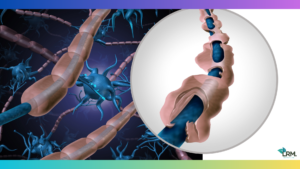Physical Address
304 North Cardinal St.
Dorchester Center, MA 02124

Multiple Sclerosis (MS) is a chronic autoimmune disease affecting the central nervous system, while Muscular Dystrophy (MD) is a genetic disorder characterized by progressive muscle weakness and degeneration. Individuals with MS experience a wide range of symptoms including fatigue, pain, and difficulty with coordination and balance, whereas MD primarily affects the muscles, leading to muscle wasting and muscle weakness.
These conditions may affect different parts of the body and have distinct causes, with MS being linked to the immune system attacking the protective covering of nerves, and MD being caused by genetic mutations impacting muscle proteins. It is important to accurately differentiate between these conditions for proper diagnosis and treatment.

Credit: www.mdpi.com
Multiple sclerosis and muscular dystrophy are two distinct neurological conditions. While multiple sclerosis is an autoimmune disease that affects the central nervous system, muscular dystrophy is a genetic disorder that causes progressive muscle weakness. Knowing the difference between the two can help in understanding their causes and risk factors.
Multiple Sclerosis (MS) and Muscular Dystrophy (MD) are both complex diseases that affect the nervous system and muscular function, but they have different underlying causes and risk factors.
Genetics play a significant role in both MS and MD. In the case of MS, certain genes have been identified as potential risk factors, although having these genes doesn’t guarantee developing the condition. These genes are involved in the immune system’s functioning, and variations can increase the likelihood of developing MS. On the other hand, MD is caused by genetic mutations that affect muscle structure and function. Inherited from parents, these mutations lead to muscle weakness and degeneration over time.
While genetics are important factors, environmental influences also contribute to the development of both diseases.
In the case of MS, various environmental factors have been linked to an increased risk of developing the condition. Factors such as exposure to certain viruses (e.g., Epstein-Barr virus), low vitamin D levels, smoking, and even geographical location (farther from the equator) have been associated with a higher MS risk. However, it’s essential to note that these factors are not solely responsible for the development of MS and may interact with genetic predisposition.
In contrast, the environmental factors associated with MD are less understood. Some forms of MD have been linked to exposure to chemicals, toxins, or certain medications. Additionally, factors like poor nutrition or infections during pregnancy can affect the development of certain types of MD in children.
In conclusion, both MS and MD have complex causes and risk factors. While genetics play a crucial role, environmental factors also contribute to the development of these diseases. Understanding these factors can help researchers and healthcare professionals develop better prevention strategies and treatments for those affected by MS and MD.

Credit: www.neurology.org
Multiple sclerosis and muscular dystrophy are both neurological diseases, but they differ in their symptoms and manifestations. Multiple sclerosis typically presents with issues like muscle weakness, difficulty with coordination, and vision problems, whereas muscular dystrophy mainly involves muscle weakness and degeneration.
Understanding these differences is crucial for accurate diagnosis and treatment.
When it comes to understanding the difference between multiple sclerosis (MS) and muscular dystrophy, it is important to explore the symptoms and manifestations of these two conditions. MS primarily affects the central nervous system, causing a range of neurological symptoms that can be quite debilitating. One of the key characteristics of MS is the presence of lesions, or damaged areas, in the protective covering of nerve fibers in the brain and spinal cord. These lesions disrupt the flow of electrical signals, leading to various symptoms. Let’s delve into some common neurological symptoms encountered in MS.
On the other hand, muscular dystrophy (MD) primarily affects the muscles themselves, leading to a wide range of muscular symptoms. This condition is characterized by the gradual weakening and breakdown of muscle tissue over time. Unlike MS, MD does not involve lesions in the central nervous system. Here are some significant muscular symptoms frequently observed in individuals with MD.
Diagnosis and prognosis play a crucial role in understanding the differences between multiple sclerosis (MS) and muscular dystrophy (MD). Identifying the specific diagnostic techniques and understanding the prognosis and life expectancy for each condition is essential in providing proper care and management for individuals affected by these neurological disorders.
The diagnosis of multiple sclerosis typically involves the use of various techniques to confirm the presence of the disease. These may include:
Understanding the prognosis and life expectancy for individuals with multiple sclerosis is essential in formulating a management plan. The prognosis for MS varies widely among individuals and is influenced by factors such as age of onset, the type of MS, and the individual’s overall health. While there is no cure for MS, advancements in treatment options have improved prognosis and life expectancy for many individuals.

Credit: www.neurology.org
When it comes to treating neurological conditions like Multiple Sclerosis (MS) and Muscular Dystrophy (MD), a tailored and comprehensive approach is necessary. Although these conditions differ in their origin and effects on the body, there are various treatment approaches available for individuals diagnosed with either MS or MD. The focus of treatment is often to manage symptoms, slow down disease progression, improve quality of life, and enhance daily functioning.
Disease-Modifying Therapies (DMTs) are the primary treatment approach for individuals diagnosed with Multiple Sclerosis. These therapies aim to reduce the frequency and severity of MS relapses, delay disability progression, and minimize inflammation and damage to the central nervous system.
There are several types of DMTs available, including:
It is crucial for individuals with MS to consult with their healthcare providers to determine the most suitable DMT based on their specific condition and medical history. Regular monitoring of treatment effectiveness and potential side effects is also essential to ensure optimal outcomes.
The treatment approach for Muscular Dystrophy focuses on managing symptoms, maintaining mobility, and preserving quality of life. Since there is currently no cure for this progressive condition, management strategies aim to address specific symptoms and provide support for daily activities.
Some common management strategies for Muscular Dystrophy include:
The management of Muscular Dystrophy requires a multidisciplinary approach, involving healthcare professionals specializing in various fields, including neurology, physical therapy, and respiratory care. Regular monitoring and adjustment of management strategies are necessary to address the changing needs and progression of the condition.
No, multiple sclerosis and muscular dystrophy are not related conditions. They are two distinct neurological disorders with different causes and symptoms.
Some diseases that can be mistaken for muscular dystrophy include spinal muscular atrophy, Charcot-Marie-Tooth disease, and myositis.
The life expectancy for someone with muscular dystrophy varies, with some living into their 60s and beyond. It can depend on the type of muscular dystrophy and individual factors. Regular medical care and support can improve quality of life and potentially extend life expectancy.
The first signs of muscular dystrophy typically include muscle weakness, difficulty walking or running, frequent falls, delayed development of motor skills, and muscle stiffness or cramps.
Understanding the difference between Multiple Sclerosis and Muscular Dystrophy is crucial for accurate diagnosis and treatment. While both conditions affect the nervous system, MS involves the immune system while MD affects the muscles directly. Recognizing the distinctions helps patients and caregivers make informed decisions about managing these complex conditions.
Always consult a healthcare professional for personalized guidance.

